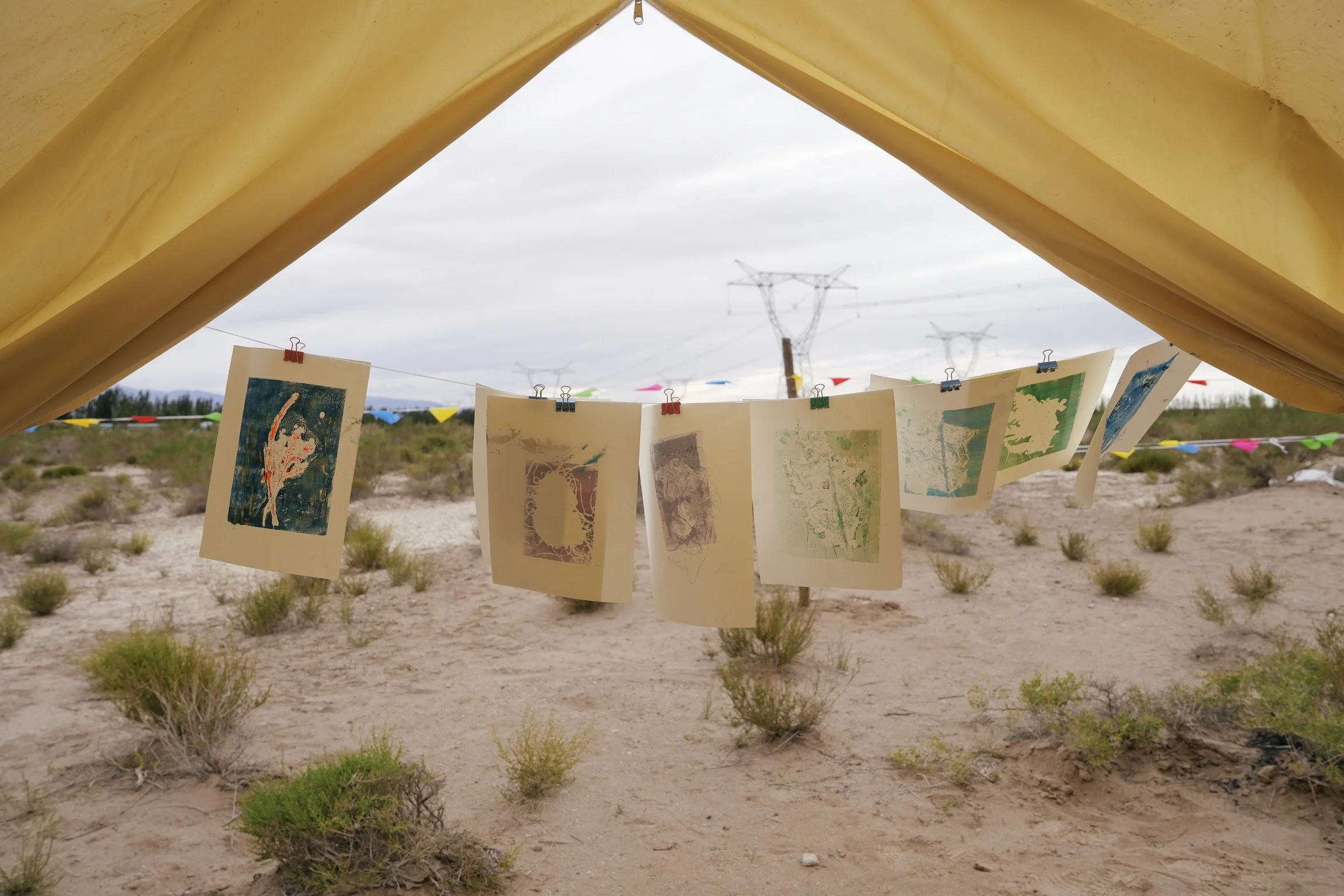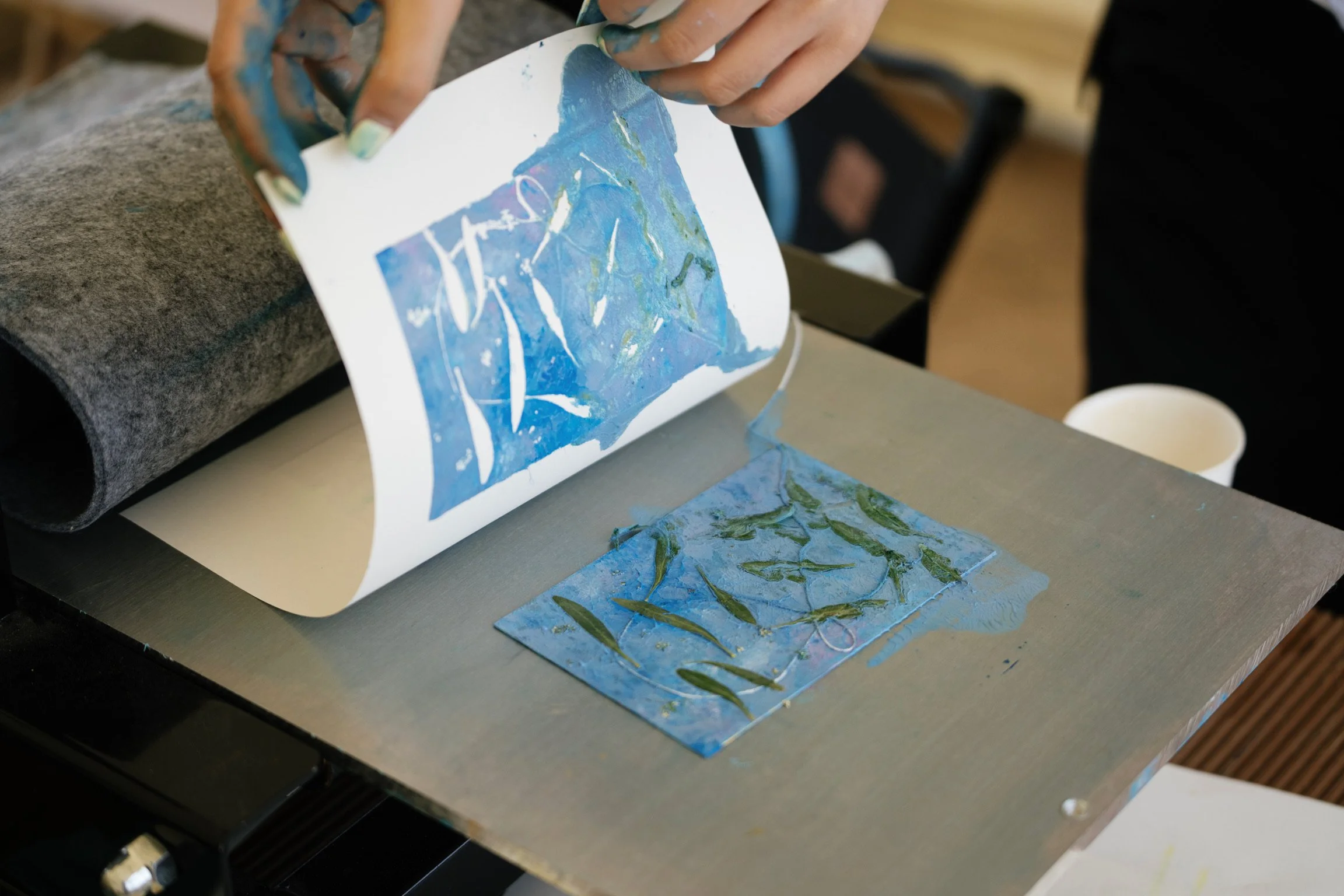Creative Encounters with Nature: Eco-Printmaking Workshop
As the golden afternoon sun cast long shadows across the desert, our students gathered for a workshop that blended art, ecology, and imagination. The inspiration came straight from the land: in the morning, the students had ventured out to collect plants from the sandy terrain, each specimen carrying the delicate textures and resilient forms of desert life.
These included the Saxaul tree (Haloxylon ammodendron), a hardy shrub that stabilizes sand dunes and anchors soil; White Thorn (Nitraria tangutorum), a salt-tolerant plant that thrives in harsh conditions; and Cistanche (Cistanche deserticola), a rare medicinal herb that parasitically grows on Saxaul roots, symbolizing the delicate interdependence within desert ecosystems. Some students even discovered camel hair entangled on Saxaul branches, a small but powerful sign that wildlife is gradually returning to the land—an indicator of ecological restoration in progress.
Armed with these natural materials, they began their creative journey. From fine leaf patterns to bold stem silhouettes, from the interplay of colors to the careful balance of composition, every step was an exercise in observation and expression. The desert plants, once silent witnesses of this fragile ecosystem, were transformed into vibrant prints—visual stories of survival, adaptation, and beauty.
Each piece of artwork was more than just an aesthetic creation; it was a living record of the students’ dialogue with the environment. These prints captured the essence of desert flora, turning scientific curiosity into artistic interpretation. For many participants, this was their first time experiencing how nature can become both a subject and a medium of art.
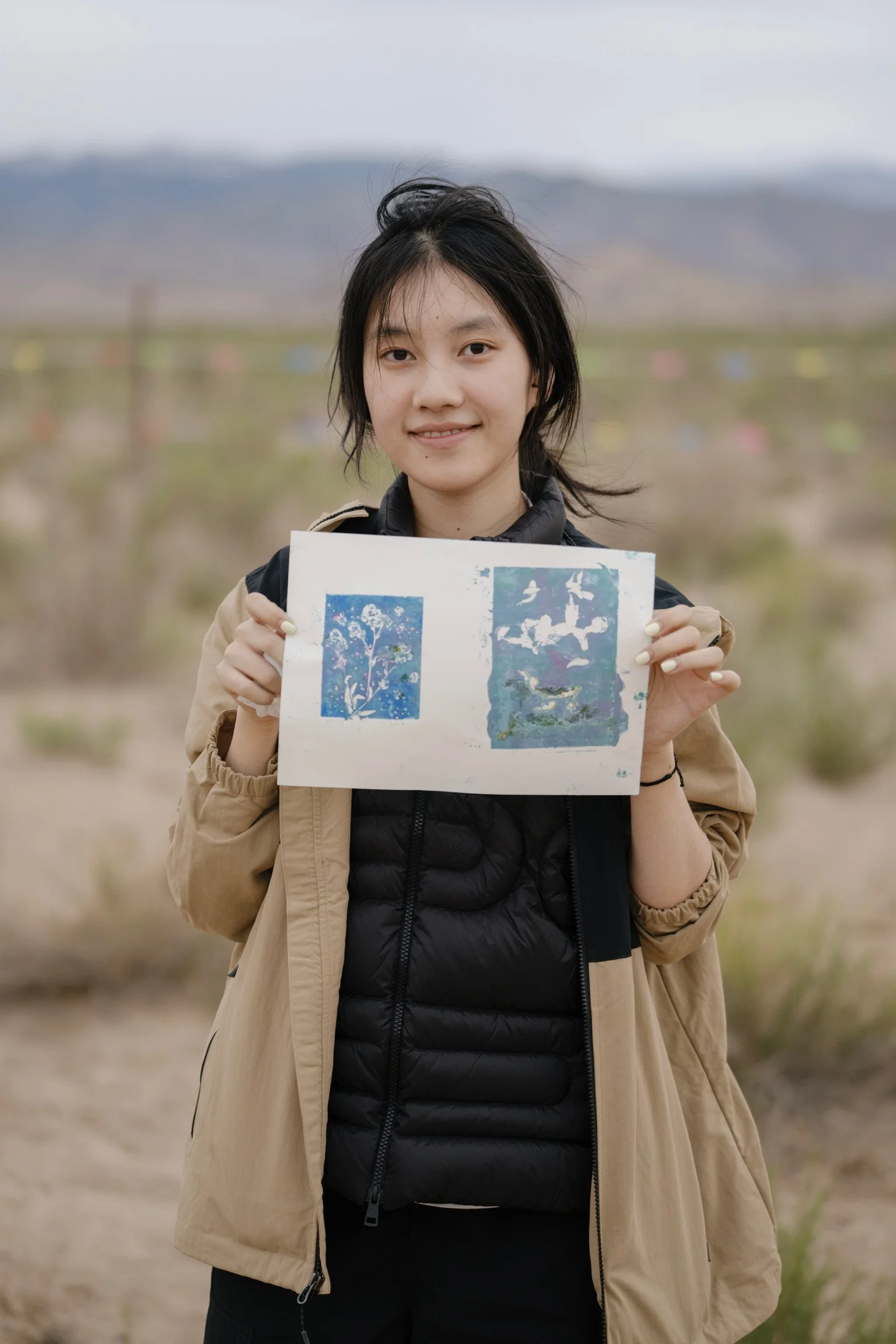


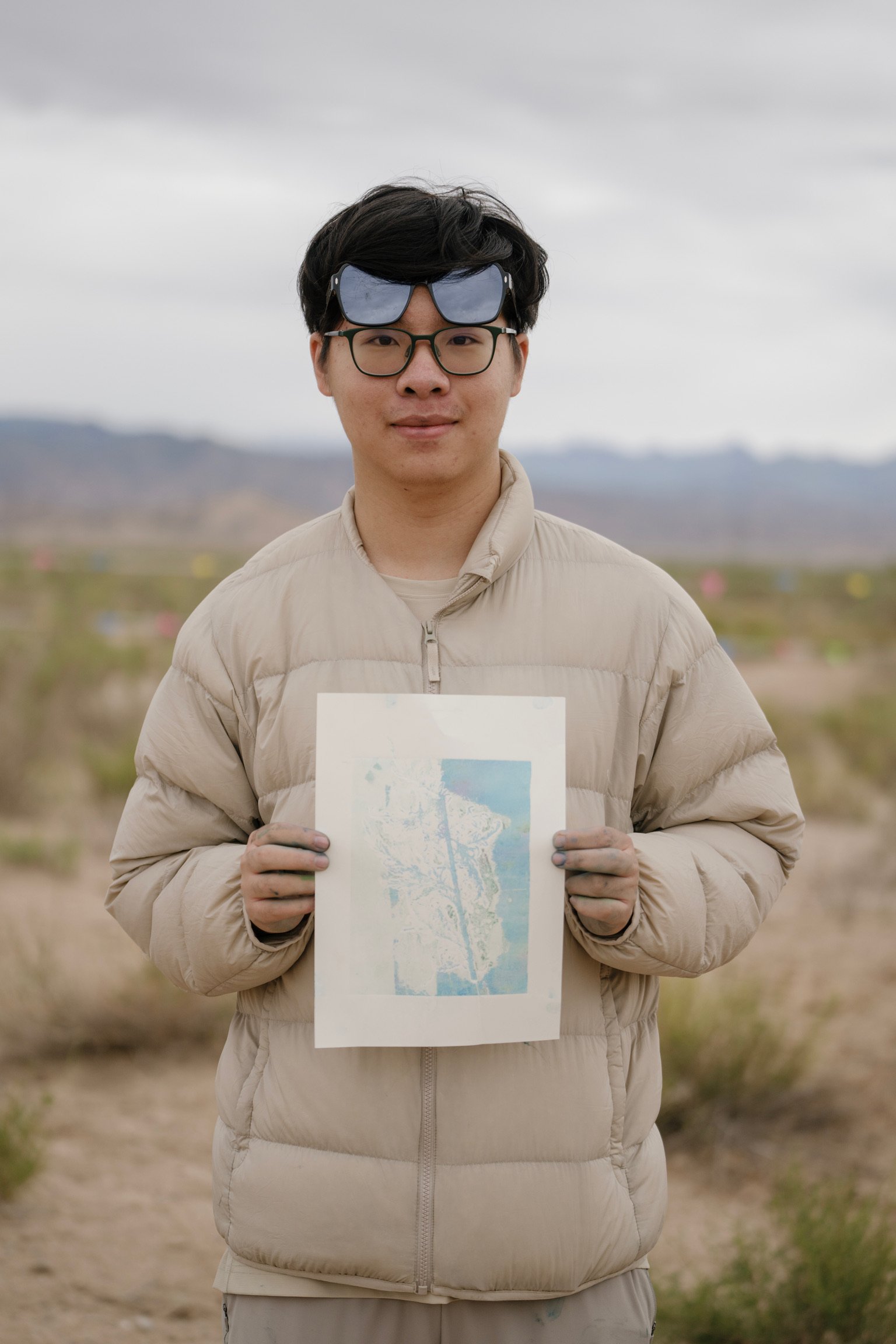
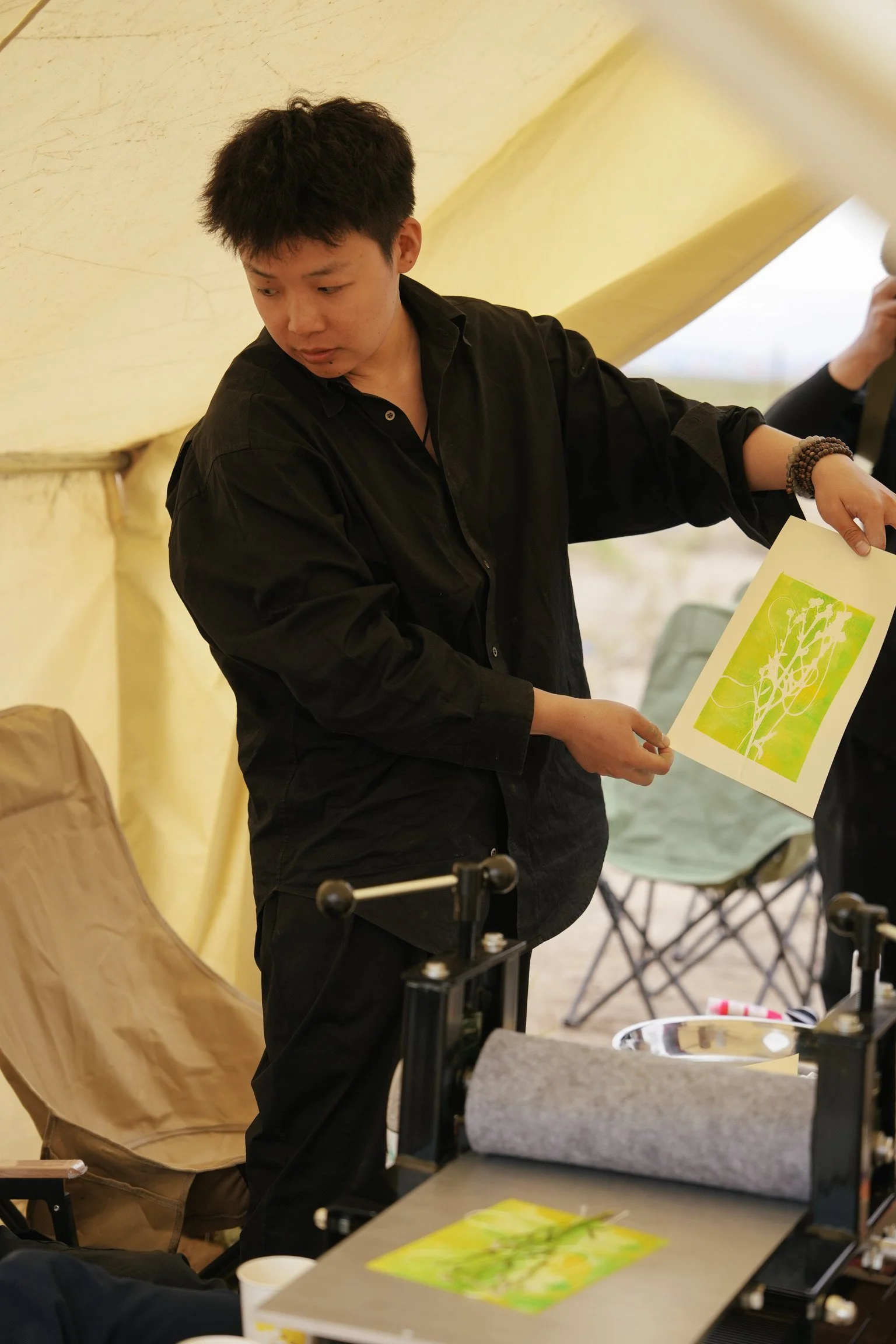

By the end of the workshop, the tent was filled with an incredible array of colors and textures, each print carrying the uniqueness of its maker and the spirit of the land. These works are not just art, they are personal imprints of a shared journey, reflecting how creativity can deepen our understanding of ecology and strengthen our connection with the natural world.

